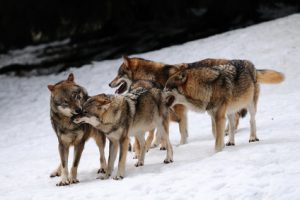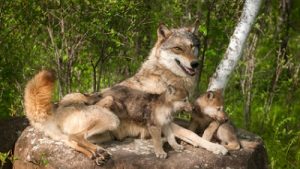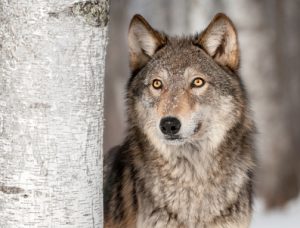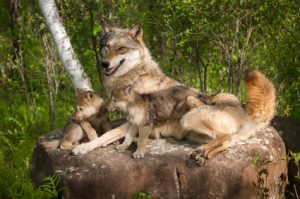Wolf Care, Behaviour & Welfare Diploma Level 3
- This Wolf Course is relevant for volunteers and those employed to work with wolves and in the field of wolf conservation and rehabilitation.
- Learn about the Types, Characteristics & Classification of Wolves. Explore their origins and natural habitats and gain an insight into the fascinating subject of Wolf behaviour.
- Learn about the Conservation and Ecological principles relevant to Wolves. Learn about the welfare & care of Wolves in captivity; including: Environmental Enrichment, record keeping, transportation and First Aid.
*You will have access to the course for 6 months only. You can purchase course extensions.
Module 1
Understanding Wolves and their behaviours
This module of the Wolf Course is about the behaviour of wolves and this introduction will help learners gain an understanding of the Wolves’ mind.
Learn how to differentiate between types & forms of behaviour amongst wolves so you can identify & explain various behaviours and how wolves communicate.
Module 2
Natural habitats and origins of Wolves
This module is about the evolution & origins of wolves and also explores natural habitats and the distribution of wolves worldwide. Learn about the habitats, evolution and origins of Wolves.
Module 3
Characteristics & Types of Wolves
This module scientifically explores the classification of Wolf Species and Sub Species to include The Red Wolf, The Grey Wolf and the Ethiopian Wolf and sub species.
Module 4
Wolves in Captivity
Explore the ethical issues of captivity, learn about general care and welfare, nutrition, how to provide environment enrichment and how to care for the behavioural and psychological needs of wolves. This module also includes information about various organisations around the world, that work to rescue and rehabilitate wolves.
Module 5
How to care for Wolves in Captivity
The subject of First Aid for Wolves, how to identify the signs of illness & disease is all covered in this module. The module includes information about identification, transport and record keeping.
Module 6
Conservation & Ecological Principles
Gain an understanding about the conflicts between wildlife and humans, ecotourism & conservation strategies. The module includes information about Community engagement methods.
Wolves are members of the taxonomy order Carnivora and family Canidae. There are around 36 species of Canidae ranging in size from the Fennec Fox (Vulpes zerda) to the Grey Wolf (Canis lupus). Canidae exist in most regions of the world apart from in Antarctica.
They are not native in Australia but now exist there as the Dingo (Canis familiaris dingo), the domestic dog (Canis familiaris) and Red Fox (Vulpes vulpes).The wolf is a species that is widely distributed in the northern hemisphere.It once existed in the UK though was hunted to extinction by the year 1743.
They have different status throughout the world, they are protected in most of Europe, yet hunted as a game species in parts eastern Europe and their status in the USA depends on whether they are listed or not on the Endangered Species Act – this status changes every few years (Mech & Boitani, 2010).
Wolves are seem by some as a species of wonder and ecological importance, by some as a species to be feared due to myth and legend or a species to be destroyed as a pest and killer of livestock. Wolves are considered a keystone species, their presence in an ecosystem helps improve the number of species able to exist there.
Approximately 6 million years ago during the end of a period known as the ‘Miocene geological epoch’, the climate of the earth was beginning to cool before the periods of Pliocene and Pleistocene that would jointly become known as the ‘Ice age’. The forests and savannahs that had largely dominated the landscape became slowly replaced by steppe or grassland creating a challenging time where only those that could adapt to the environmental changes were able to survive.
One of those species was the ancestor of modern wolves. At some point towards the end of the Miocene the first species of the genus Canis arose as the common ancestor of all modern coyotes, wolves, and domestic dogs although it would still be a long period of time before modern wolves appeared.
Later during the Pliocene and Pleistocene periods around 5-2 million years ago, small woodland foxes in the southern part of North America began to grow larger. With the death of some larger species that could not survive the changes, the conditions became optimal for moderate sized, swift and intelligent Canids. Although there still remain ‘taxonomic uncertainties’, Canids are among the most taxonomically researched of all animals.
We offer a selection of accredited and employer recognised courses specifically designed for careers working with animals.
If you have any questions about our courses, please contact us.
We’ve assisted many people to achieve their goal to work with animals. Read more about our 5-star reviews and student success stories.
Gain relevant training to achieve your goal to work with animals.





